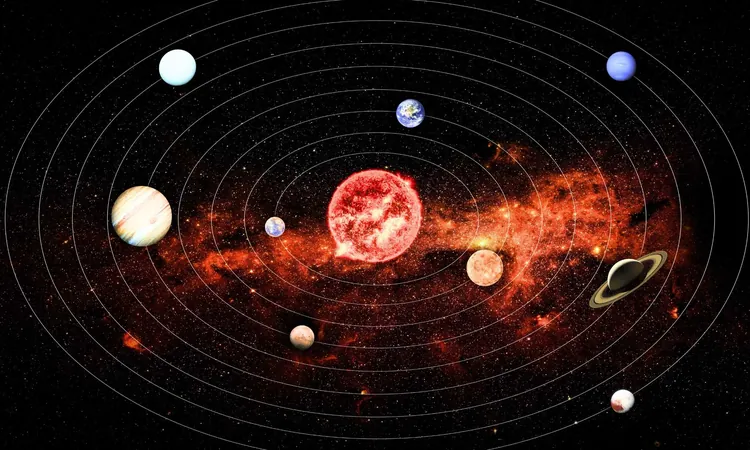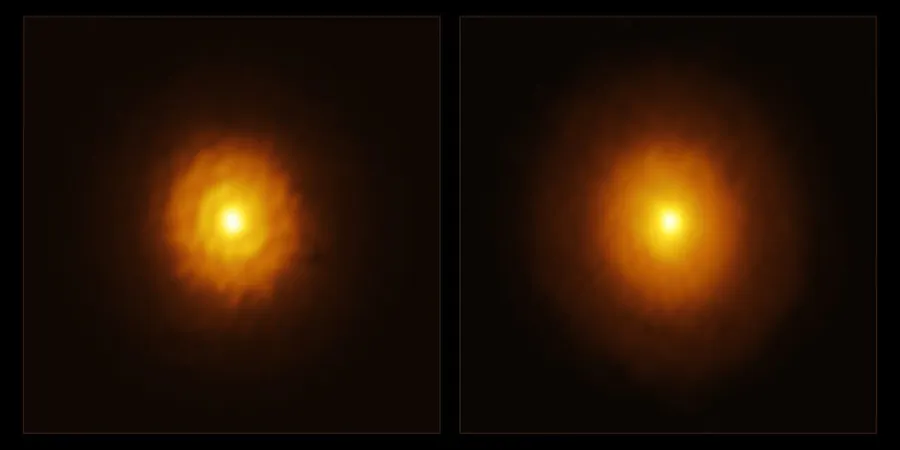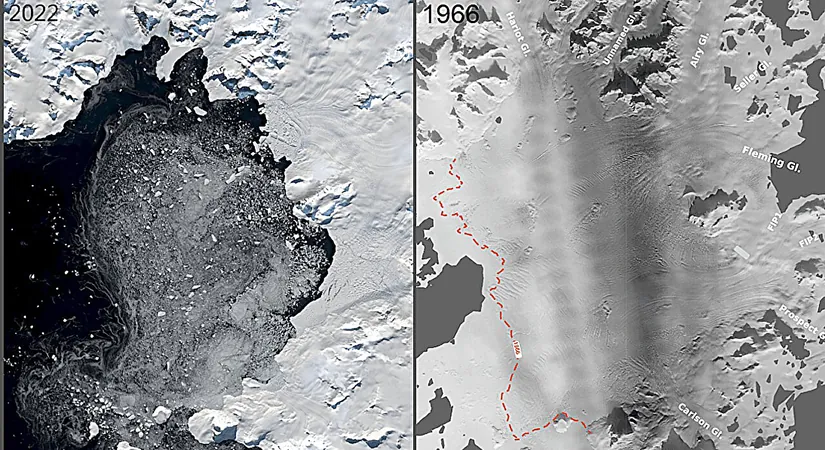
Could Planet Nine Be Back? Astronomers Suggest a New Discovery in Our Solar System!
2025-05-25
Author: William
Once upon a time, our solar system boasted nine planets, but Pluto’s demotion in 2006 cast a shadow over that legacy. Now, scientists are reigniting discussions about the possibility of a ninth planet lurking in the distant reaches beyond Neptune.
A New Hope for Planet Nine?
Pioneering astronomers are on the case! A remarkable team, including Nikku Madhusudhan from the University of Cambridge, has made waves in the astronomical community by unveiling hints of life on a distant exoplanet, K2-18b. Meanwhile, Mike Brown from Caltech has also unearthed potential signs of a new celestial body in our solar neighborhood, stirring excitement over the idea that we may not be done at just eight planets.
Treasures at the Edge of the Solar System
Researchers from Taiwan have caught the attention of the astronomy world with their groundbreaking investigation into a Neptune-sized object that may be drifting an astounding 46.5 to 65.1 billion miles from the Sun. This tantalizing clue emerges from two deep infrared surveys conducted over two decades, utilizing state-of-the-art technology capable of detecting the faintest planetary glows.
Mysteries within the Kuiper Belt
The Kuiper Belt, a realm of icy bodies beyond Neptune, has long captivated astronomers. Strange patterns hint at a lurking force at play, with mysterious clumps of objects behaving strangely, some even moving opposite to their neighbors. This could suggest that a planet, yet unseen, is orchestrating the ballet of these icy worlds.
Is This New World Planet Nine?
Unlike Pluto, which was reclassified due to its failure to clear its orbit, this potential new body seems to be in a league of its own. With enough mass to rival Neptune, this planet could ensure its territory remains largely unchallenged, giving credence to the hope of having nine planets again.
What Lies Beneath the Surface?
If this enigmatic object exists, estimates suggest it could weigh between seven to seventeen times that of Earth, classifying it as an ice giant, akin to Uranus or Neptune. Glimmering faintly in sunlight, its surface temperature would plummet to a frigid -370°F to -360°F, possibly shrouded in a thick mist of gas and ice.
Unlocking Secrets from the Past
Historically, this intriguing search was made possible by infrared telescopes that spotted objects too dim for traditional optical astronomy. A comparison of scans from the Infrared Astronomical Satellite in 1983 with the AKARI survey later ignited the quest to locate a slowly moving planet, raising hopes for undiscovered worlds.
A Maze of Cosmic Discoveries
The quest for potential planets comes amid a flourishing era of exoplanet research. With astronomers discovering exoplanets having unusual atmospheres, the intrigue surrounding our own solar system's obscurities only deepens. In 2020, scientists even revealed the coldest exoplanet ever recorded!
Cautious Optimism in the Community
While excitement brews, scientists remain carefully optimistic. Current data lacks definitive proof of a complete orbit; follow-up observations by advanced telescopes are eagerly awaited. Teams are poised to revisit the same portion of the sky to confirm the existence of this elusive candidate.
The Implications of a Ninth Planet
Should Planet Nine be confirmed, it could drastically revise our understanding of astronomy. Textbooks may need a substantial update, as a new, distant giant reshapes the narrative of our solar system's formation. It also raises intriguing questions about similar hidden giants beyond our own system.
The Future Awaits!
As scientists gear up for further exploration of the cosmic unknown, the prospect of a ninth planet tantalizes our imagination. Who knows what groundbreaking discoveries await?









 Brasil (PT)
Brasil (PT)
 Canada (EN)
Canada (EN)
 Chile (ES)
Chile (ES)
 Česko (CS)
Česko (CS)
 대한민국 (KO)
대한민국 (KO)
 España (ES)
España (ES)
 France (FR)
France (FR)
 Hong Kong (EN)
Hong Kong (EN)
 Italia (IT)
Italia (IT)
 日本 (JA)
日本 (JA)
 Magyarország (HU)
Magyarország (HU)
 Norge (NO)
Norge (NO)
 Polska (PL)
Polska (PL)
 Schweiz (DE)
Schweiz (DE)
 Singapore (EN)
Singapore (EN)
 Sverige (SV)
Sverige (SV)
 Suomi (FI)
Suomi (FI)
 Türkiye (TR)
Türkiye (TR)
 الإمارات العربية المتحدة (AR)
الإمارات العربية المتحدة (AR)